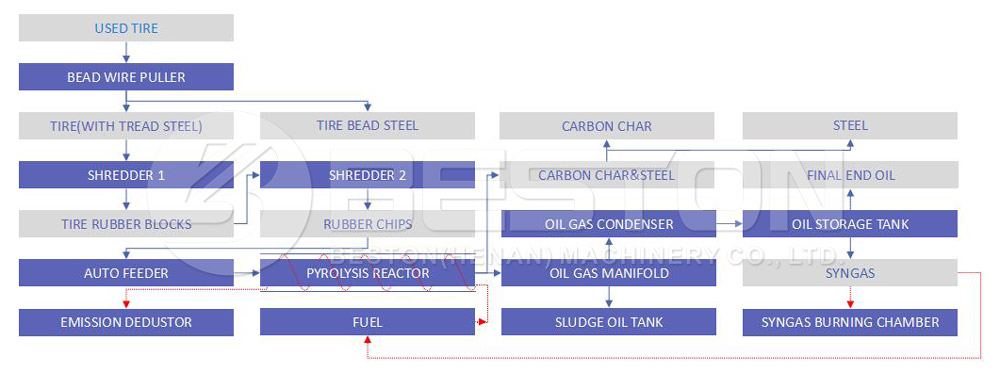How a Pyrolysis Machine Helps Deal With Tire Pollution
Tires. They are the unsung plastic polluter that nobody ever thinks about. They are everywhere; in our garages, landfills, dumpsites, and even discarded in unusual places like roadsides.
Furthermore, it’s becoming increasingly obvious that as the rubber on tires breaks down, microscopic plastic polymers are released, which frequently end up as pollutants in the oceans. People are therefore more conscious about the environmental pollution caused by waste tires. Choose a pyrolysis machine to dispose of wate tyres.

How do People Dispose of Used Tires?
Currently, the most frequent methods for disposing of waste tires are:
• Waste tire recycling to recovered rubber
• Tire retreading
• Reusing to make other products like furniture, shoes, and planters
• Tire retreading
• Pile up to landfills
• Pyrolysis Machines
Pyrolysis machines are the ultimate choice when it comes to tire disposal. This is because tires are disposed of in such large quantities. As a result, we need a solution that is capable of dealing with such serious pollution. Pyrolysis can utilize large quantities of tires to give useful byproducts like oil, gas, and steel wool.
What Is a Tire Pyrolysis Plant?
A tyre pyrolysis plant is a machine that converts mainly waste tires to fuel oil. The raw material is either tire, rubber, or waste plastic. The raw material is normally heated in a reactor to yield useful byproducts like oil gas in a condenser.
The tire pyrolysis process Explained
Tires are primarily made up of rubber (both natural and synthetic), carbon black, and a variety of other organic and inorganic additives (include zinc oxide, sulfur, plasticizer, etc). During pyrolysis, the primary chain of the rubber in tires is fractured into monomer, biopolymer, and fragments in a sealed pyrolysis reactor with suitable heating.
They are then polymerized to many different kinds of olefins, thus converting the volatile chemicals to solid carbon. The main end products include Pyrolysis Oil (RPO – waste rubber process oil), Hydrocarbon Gas, Steel Wire ( metal scrap), and Carbon Char ( pyrolytic carbon char).
What Are the Key Benefits of a Pyrolysis Machine?
The key benefits of pyrolysis include the following:
• It lowers the likelihood of water pollution.
• It lowers the amount of waste sent to landfills and lowers greenhouse gas emissions.
• It’s a low-cost, easy-to-use technology that can handle a wide range of feedstocks.
• By generating energy from domestic resources has the potential to minimize the country’s reliance on imported energy supplies.
Why Waste management using contemporary pyrolysis technology is less expensive than landfill disposal.
• It creates several new jobs for low-income individuals dependent on the amount of waste generated in the region, which promotes public health by removing waste.
• A waste tyre recycling plant can be built in a short amount of time.

A Beautiful Future With The Pyrolysis Machine – Alternative Sources of Energy
The use of energy per capita is increasing as the world’s population grows. As a result, the inevitability of continuing to develop alternate energy sources is clear. Tires, in particular, have a bright future. They have the potential to contribute value as alternative energy sources while also conserving the environment. Seek out high-performance continuous pyrolysis plant here.